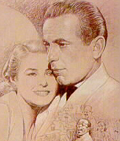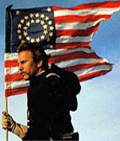|
Study Guide -
Rear Window (1954)
Director : Alfred Hitchcock
Stars :
James Stewart .... L. B. Jefferies
Grace Kelly .... Lisa Carol Fremont
Wendell Corey .... Det. Lt. Thomas J. Doyle
Thelma Ritter .... Stella
Raymond Burr .... Lars Thorwald
Judith Evelyn .... Miss Lonelyheart
Preparation :
Read the filmsite.org review
Historical/Social Significance :
"deploys the techniques of the national security apparatus to spy on the neighbours of his Lower East Side apartment complex. To be sure, he lacks the listening devices, hidden cameras, and microfilm of the FBI and the CIA, but his telephoto lens allows him to scrutinise even the remotest corners of his neighbors' apartments and to discover their most carefully guarded secrets. Yet in admitting its complicity with the government persecution of suspected Communists, homosexuals, lesbians, and other “undesirables”, Rear Window was simply . . . [admitting] that its technology facilitated the systematic repression of basic civil liberties (the right to free speech, the freedom of association) as a way of reclaiming that technology for the postwar settlement. Implicit in the film's “confession” of its own tainted procedures is a critique of McCarthyism. "1
"You can't have a film class without using a Hitchcock film." Jack Nilan
Synopsis :
Photographer L.B. Jeffries breaks his leg and gets to spend some quiet time looking out his rear window.
Guided Questions for Viewing :
Assessment questions will be based on the following :
-
This film has many elements in common with film noir but there is something that is different. Why isn't Rear Window film noir?
-
Some critics feel that the main story in the film is the relationship between Jeff and Lisa. Discuss how this relationship progresses through the film.
-
What do you think of Jeff's voyeurism? What happened to Jeff at the end of the film?
-
Discuss the movie as a critique of McCarthyism using the quote above (Historical/Social Significance) as a starting point.
-
It has been said that Hitchcock is a misogynist because of what happens to so many females in his movies. In this film how do the men compare to the women?
-
Stella says in the movie," What people ought to do is get outside their own house and look in for a change". I think she was talking about Jeff. What was she trying to say?
-
How does the movie end? Is anyone the winner? Where is the wheel chair situated when the movie ends? What does this signify?
-
Rear Window can be viewed as Jeff's "getting religion", learning to care about his neighbors. In the beginning he views his neighbors as objects and really doesn't care about them. As the movie goes on he begins to care about them and gets involved. Comment on this with reference to the film.
-
We can look upon the movie as an allegory in which the story represents the concept of whether it is worth giving up personal freedom to have more security (McCarthyism, Homeland Security Act -2002). What is your opinion on this very important issue?
-
In the end Jeff does catch the villain. Do you feel the ends justify ther means? Would you be willing to give up personal freedom so that the government could do a better job of catching "villains"?
Sources:
Spoto, Donale. The Art of Alfred Hitchcock., Anchor Books, Durham, 1976.
Dirks, Tom. "Rear Window". http://filmsite.org/stra.html
|



